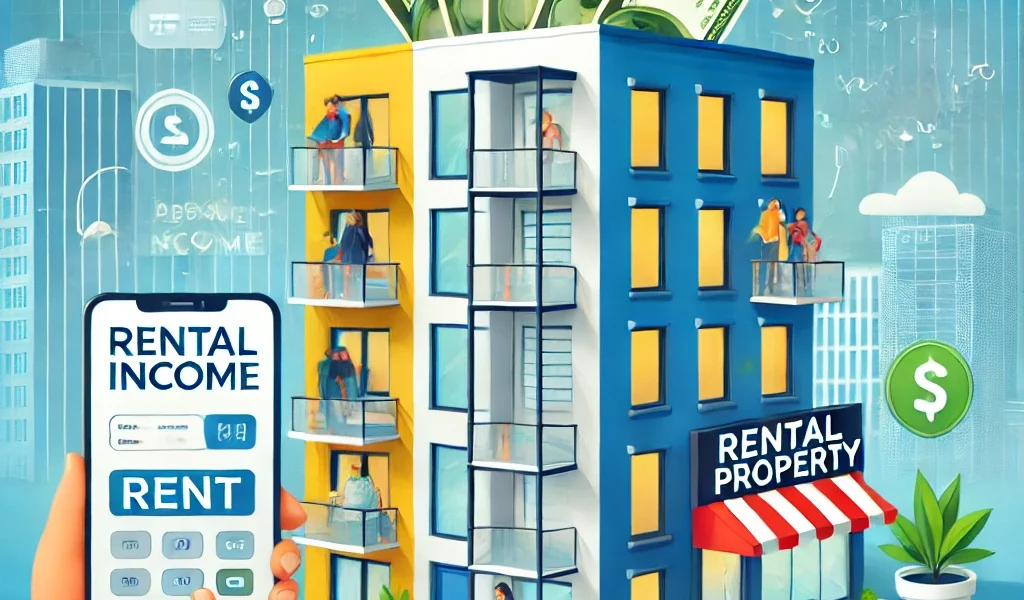Creating a passive income stream with rental properties is a proven strategy to build wealth and achieve financial freedom. Unlike active income, which requires continuous work, passive income from rental properties allows you to earn money while maintaining flexibility in your lifestyle. However, successful real estate investing requires careful planning, research, and strategic decision-making. This DIY guide will walk you through the essential steps to generate sustainable passive income through rental properties.
Understanding Passive Income from Rental Properties
Passive income from rental properties is the money earned through leasing residential or commercial spaces to tenants. It requires an initial investment, but once the properties are rented, they can generate consistent cash flow with minimal day-to-day effort.
Step 1: Set Clear Investment Goals
Before investing in rental properties, define your financial objectives:
- Wealth Accumulation: Are you looking for long-term property appreciation?
- Steady Cash Flow: Do you want immediate monthly income?
- Retirement Planning: Are you building passive income for future financial security?
- Diversification: Do you want to diversify your investment portfolio?
Clarifying your goals will help you choose the right properties and investment strategies.
Step 2: Choose the Right Type of Rental Property
There are different types of rental properties, each with unique advantages and challenges:
1. Single-Family Homes
- Easier to manage and finance
- High tenant demand in suburban areas
- Appreciation potential over time
2. Multi-Family Properties
- Multiple rental units generate higher cash flow
- Higher upfront cost but more stable income
- Requires more active management
3. Short-Term Rentals (Airbnb, Vacation Homes)
- Higher rental income potential in tourist areas
- Requires active marketing and maintenance
- Subject to local short-term rental regulations
4. Commercial Properties (Offices, Retail Spaces)
- Longer lease terms provide income stability
- Higher initial investment and maintenance costs
- Requires knowledge of commercial real estate trends
Step 3: Conduct Market Research
Investing in the right location is crucial for rental property success. Consider the following factors:
- Job Market and Population Growth – Areas with growing employment opportunities attract tenants.
- Rental Demand and Vacancy Rates – Low vacancy rates indicate a strong rental market.
- Local Regulations and Taxes – Understanding landlord-tenant laws and property taxes prevents legal issues.
- Future Development Plans – Infrastructure projects and new businesses increase property value.
Step 4: Secure Financing for Your Investment
Unless you are paying in cash, financing options for rental properties include:
- Conventional Mortgages – Requires good credit and a down payment (typically 20-25%).
- FHA or VA Loans – Available for owner-occupied properties with low down payments.
- Hard Money Loans – Short-term loans for fix-and-flip investors.
- Private Lending or Partnerships – Partnering with investors to pool capital.
Step 5: Calculate Expenses and Cash Flow
To ensure profitability, analyze the following costs:
- Mortgage Payments – Principal and interest on your loan.
- Property Taxes and Insurance – Vary by location and property type.
- Maintenance and Repairs – Regular upkeep to maintain tenant satisfaction.
- Property Management Fees – Typically 8-12% of rental income if hiring a management company.
- Vacancy and Tenant Turnover – Budgeting for vacant periods and re-leasing costs.
Use the 1% Rule as a guideline: Monthly rent should be at least 1% of the property’s purchase price.
Step 6: Find and Screen Tenants
A reliable tenant ensures steady rental income and minimizes issues. Follow these steps for tenant screening:
- Advertise the Property – Use online platforms, real estate agents, and local classifieds.
- Pre-Screen Applicants – Verify income, employment history, and rental background.
- Conduct Credit and Background Checks – Assess financial responsibility and past evictions.
- Sign a Lease Agreement – Clearly outline rental terms, rules, and security deposit requirements.
Step 7: Manage Your Rental Property Efficiently
Self-Management vs. Hiring a Property Manager
- Self-Management – Saves costs but requires time and effort.
- Property Management Company – Handles tenant relations, maintenance, and rent collection for a fee.
Essential Property Management Tasks
- Regular property inspections and maintenance
- Collecting rent on time
- Handling tenant complaints and disputes
- Complying with landlord-tenant laws
Step 8: Optimize Rental Income and Reduce Expenses
Maximizing profits involves strategic improvements and cost-cutting measures:
- Increase Rent Strategically – Adjust rent based on market trends and property upgrades.
- Minimize Vacancies – Maintain good tenant relationships and offer lease renewal incentives.
- Lower Maintenance Costs – Perform routine maintenance to prevent major repairs.
- Energy Efficiency Upgrades – Reduce utility costs with smart thermostats and LED lighting.
- Tax Deductions – Claim expenses like mortgage interest, depreciation, and repairs.
Step 9: Scale Your Real Estate Portfolio
Once you have a successful rental property, consider expanding your investments:
- Use Equity to Buy More Properties – Refinance or use home equity loans to fund new purchases.
- Leverage the BRRRR Method – Buy, Rehab, Rent, Refinance, and Repeat.
- Diversify Across Locations and Property Types – Spread risk and maximize income sources.
- Consider REITs for Passive Investing – Real Estate Investment Trusts (REITs) provide exposure to real estate without property management responsibilities.
Step 10: Plan for Long-Term Wealth Growth
A long-term rental property strategy includes:
- Building an Emergency Fund – Cover unexpected repairs and vacancies.
- Creating an Exit Strategy – Decide whether to sell properties, pass them to heirs, or transition to full-time real estate investing.
- Continuous Learning – Stay updated on market trends, tax laws, and investment opportunities.
Final Thoughts
Building a passive income stream with rental properties requires careful planning, strategic investment, and ongoing management. By following this DIY guide, you can create a steady cash flow, grow wealth over time, and achieve financial freedom through real estate investing.




